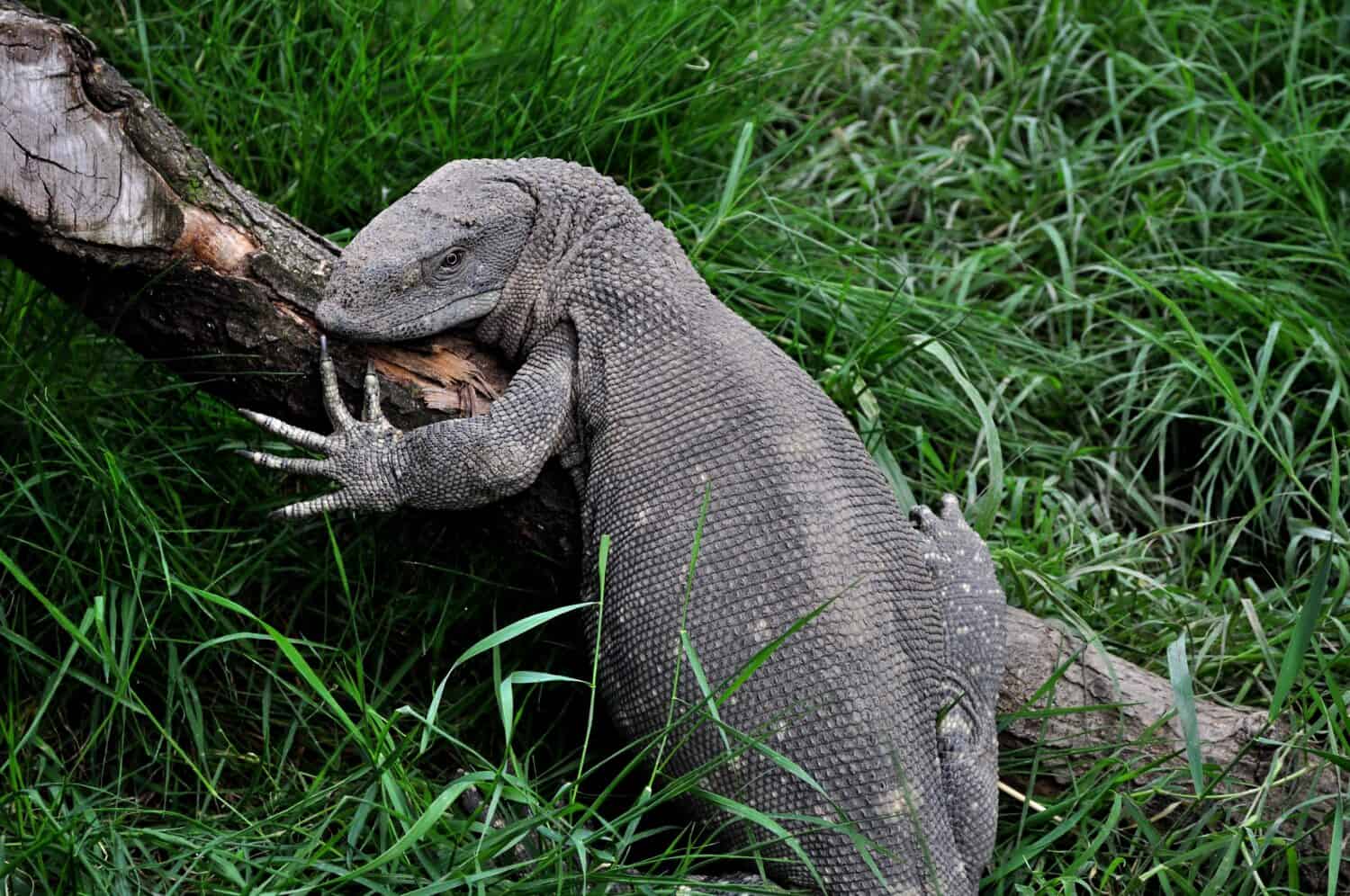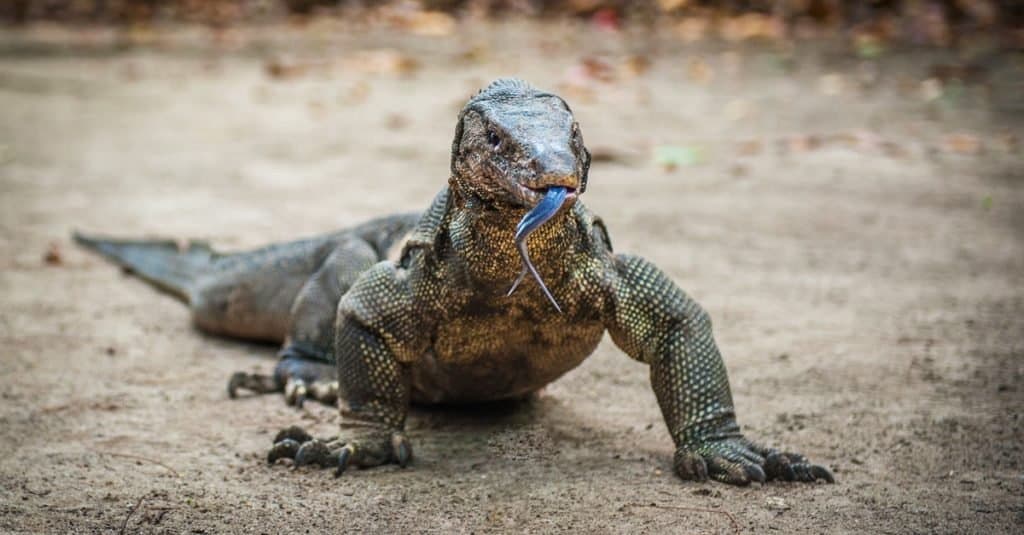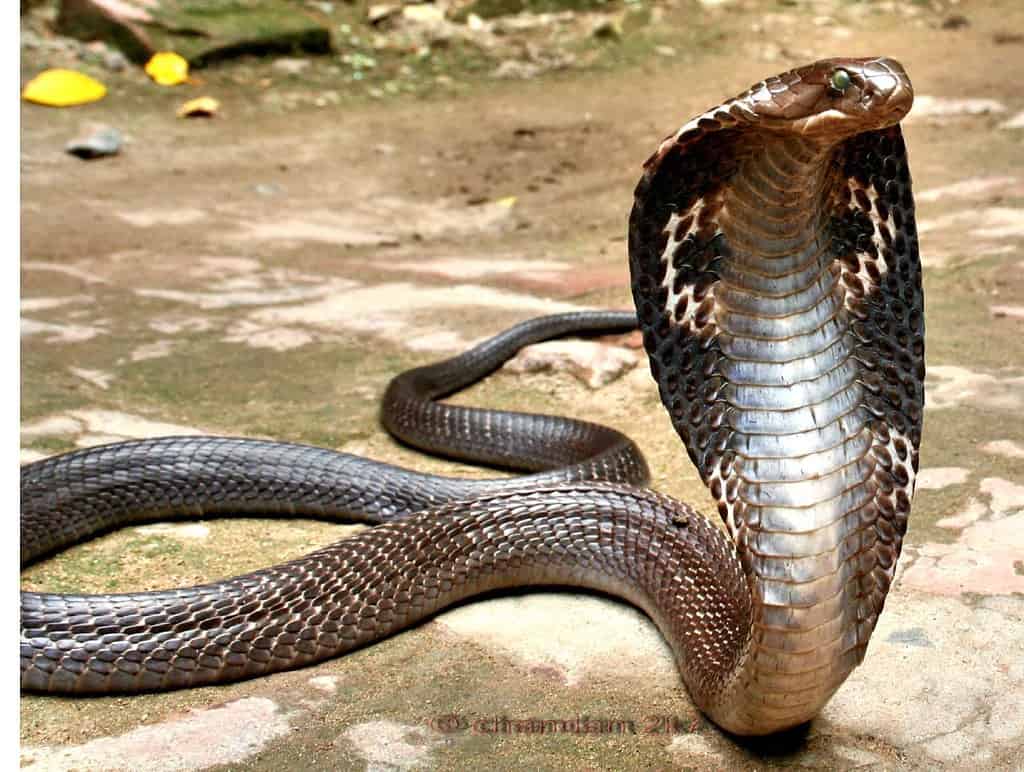Continue reading for our analysis...

This action-packed short shows a massive snouted cobra trying to take down a huge rock monitor. Right from the start, the snake has already sunk its fang into the back of the lizard’s neck. The attacked creature appears completely unbothered. While the snake hangs on, the lizard continues to walk along as if nothing happened. Then, the lizard makes a sharp movement with its head, and the cobra lets go. The would-be prey takes this opportunity to run as the video finishes.
Watch this Massive Cobra Take on a Huge Monitor Lizard
What happened in the end? Did the monitor live? Watch the video and see what you think!
Before that though, let’s learn more about these animals.
What is a Snouted Cobra?

The snouted cobra is a large snake that can grow over 8 feet long!
©iStock.com/Simoneemanphotography
The snake in the video is a snouted cobra. Found in Southern Africa, this extremely venomous, massive cobra can grow over 8 feet long! Their usual prey includes rodents, birds, lizards, eggs, and other snakes. They eat other dangerous snakes like puff adders and spitting cobras.
Sometimes called the Egyptian banded cobra, this snake rarely comes into contact with humans. They are not considered an aggressive species. Generally, they choose to flee from humans unless provoked or stepped on. Conflict with humans, including bites, is rare according to the African Snakebite Institute.
Their venom is highly toxic. It is both neurotoxic and cytotoxic. Neurotoxins cause neurologic problems like dizziness, headaches, and paralysis (inability to move). This venom causes respiratory paralysis, in particular. That makes the person unable to breathe on their own. Cytotoxins cause the death of cells, such as skin and muscle cells. This death of cells, called necrosis, is common in many types of venomous bites. If bitten, a human will need large doses of antivenom to survive.
What is a Rock Monitor?

There are three types of rock monitors: White-throated, Angolan-white-throated, and black-throated.
©Zoran zoo-vrt/Shutterstock.com
The massive cobra might be impressive, but the rock monitor is too! When first discovered in 1802, these lizards were listed as a type of (subspecies) savannah monitors. Due to certain differences, rock monitors were later changed to a separate species. In fact, “rock monitor” is a general term that includes three different subspecies:
Rock monitors can grow up to 6.5 feet long and weigh nearly 40 pounds! Basically, these huge lizards fear very little from the world around them. They do face treats from martial eagles, leopards, and humans. Some people believe that injecting themselves with their blood will cure HIV/AIDS. These lizards sell on the black market in Uganda for about $175 each. Despite this, the ICUN Red List places the species in the category “least concern” as of 2019.
How Large Do Monitor Lizards Get?

These lizards can grow to a massive size of 10 feet and weigh 300 pounds!
©elena_photo_soul/Shutterstock.com
The monitor lizard reaches a total length of 10 feet and weighs approximately about 300 pounds. While most young lizards are born through sexual reproduction, isolated females can occasionally produce offspring via parthenogenesis.
Among present-day species, adult lengths span from 20 cm, as seen in species like Varanus sparnus, to over 10 feet for the Komodo dragon.
However, the extinct varanid known as the megalania (Varanus priscus) could have potentially grown beyond 23 feet!
Do These Massive Cobras Normally Eat Rock Monitors?

It is common for cobras to eat lizards.
©Chandan Singh from India, CC BY 2.0 – License
Yes! Along with rodents and other snakes, the snouted cobra often makes a meal of lizards. Most lizards are not immune to their venom. So, the one in our video likely died from its wounds and was later eaten. According to one zoo report, these massive snakes specifically target monitor lizards. The larger the cobra, the bigger the meal it requires. King cobras also kill and eat monitor lizards.
Discover the "Monster" Snake 5X Bigger than an Anaconda
Every day A-Z Animals sends out some of the most incredible facts in the world from our free newsletter. Want to discover the 10 most beautiful snakes in the world, a "snake island" where you're never more than 3 feet from danger, or a "monster" snake 5X larger than an anaconda? Then sign up right now and you'll start receiving our daily newsletter absolutely free.
Thank you for reading! Have some feedback for us? Contact the AZ Animals editorial team.







